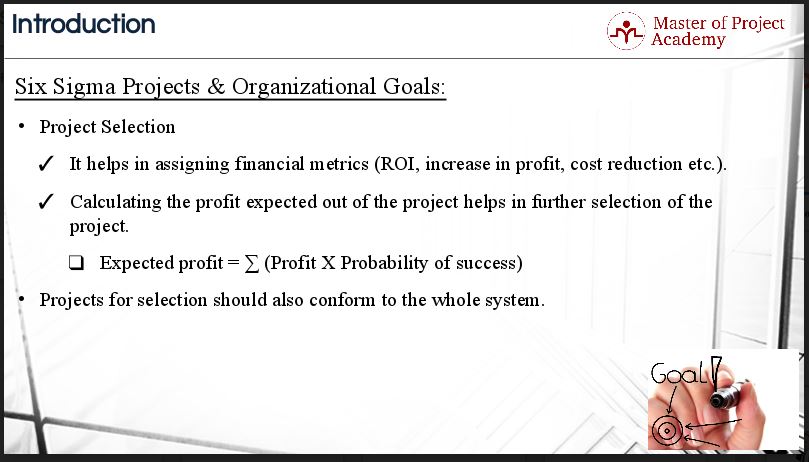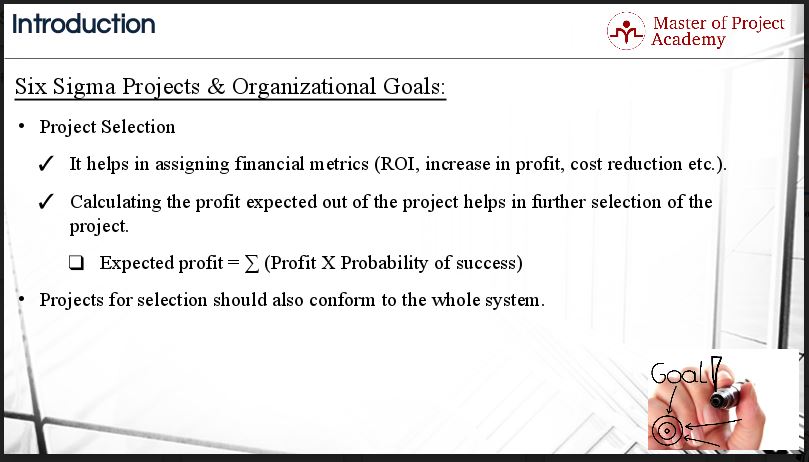One of the benefits of doing Six Sigma projects for problem-solving is that there are clearly defined roles and responsibilities for the various parties involved. If you are thinking of enrolling in online free six sigma training or lean six sigma green belt course to learn more about how to execute Six Sigma projects you will learn about all the roles and responsibilities of 6 sigma in detail. Roles and responsibilities form a critical part of the Six Sigma Principles.
Attend our 100% Online & Self-Paced Free Six Sigma Training.
This article aims to provide insight into the importance of stipulating a strict set of roles and responsibilities in Six Sigma Projects as well as outline the various roles in Six Sigma projects and their responsibilities.
In Six Sigma projects, members of an organization are assigned specific roles to play. This highly structured format is necessary in order to implement Six Sigma projects throughout the organization. Six Sigma projects will NOT necessarily bring improvement to a Business. Six Sigma projects should be aligned with the goals of a Business System or Organizational goals. Six Sigma projects must align to the organizational goals, short term, and long term. Based on the organization’s goals, Six Sigma projects selection is done.
Six Sigma Projects Selection
The Project selection group for Six Sigma projects consists of Master Black Belts, Black Belts, Champions, and Key Executives establish a set of criteria for Six Sigma projects selection and team assignments. Team selection for Six Sigma projects may be done based on the nature of the project. If the project has extensive data analysis, it may be given to a Six Sigma team. Whereas, if the project is about establishing a necessary quality standard, it may be given to a quality assurance team. The design of new products/process should follow the DFSS roadmap also known as Design for Six Sigma projects.
Check our Six Sigma Training Video
The importance of financial metrics in Six Sigma projects selection
It helps to assign financial metrics to the outcome of the project during its selection phase. Examples of financial metrics would include return on investment (ROI), an increase in profit, cost reduction and so on. Calculating the profit expected out of Six Sigma projects helps in further selection of the project. Expected profit equals the sum of profit times the probability of success.

The Six Sigma Projects for selection should also conform to the whole system. The effect of proposed changes on other processes within the system should be considered in Six Sigma Projects. Improvement in any of one process of a Business System should not reduce optimization of the other processes in the system.
Responsibilities in Six Sigma Projects.
There are seven responsibilities, we will be going over each one-by- one.
Leadership
A leadership team or council defines the goals and objectives in the Six Sigma process. Just as a corporate leader sets a tone and course to achieve an objective, the Six Sigma Council sets out the goals to be met by the team. Here is the list of leadership

Council Responsibilities:
- Define the purpose the Six Sigma Program
- Explain how the result is going to benefit the customer
- Set a schedule for work and interim deadlines
- Develop a means for review and oversight
- Support team members and defend established positions.
Sponsor
The Six Sigma sponsor are high-level individuals who understand Six Sigma and are committed to its success. The individual in the sponsor role acts as a problem solver for the ongoing Six Sigma project. Six Sigma will be led by a full-time, high-level champion, such as an Executive Vice President. Sponsors are owners of processes and systems who help initiate and coordinate Six Sigma improvement activities in their areas of responsibilities.
Implementation Leader
The person responsible for supervising the Six Sigma team effort, who supports the leadership council by ensuring that the work of the team is completed in the desired manner. The implementation leader ensures the success of the implementation plan and solves problems as they arise, organizes training as needed, and assists sponsors motivating the team.
Coach
The Six Sigma expert or consultant who sets a schedule defines results of a project, and who mediates conflicts or deals with resistance to the program. Duties include working as the go-between for sponsor and leadership, scheduling the work of the team, identifying and defining desired results of the project, mediating disagreements, conflicts, and resistance to the program and identifying success as it occurs.
Team Leader
The individual responsible for overseeing the work of the team and for acting as the go-between with the sponsor and the team members. Responsibilities include communication with the sponsor in defining project goals and rationale, picking and assisting team members and other resources, keeping the project on schedule, and keeping track of step in the process as they are completed.
Team Member
An employee who works on a Six Sigma project, given specific duties within a project, and deadlines to meet in reaching specific project goals. The team members execute specific Six Sigma assignments and work with other members of the team within a defined project schedule, to reach specifically identified goals.
Process Owner
The individual who takes on responsibility for a process after a Six Sigma team has completed its work. When the Six Sigma project has been completed, the process owner is responsible for monitoring the performance of the project metrics post implementation. If the changes to the process that was part of the Six Sigma project does not perform optimally, the process owner must bring it to the attention of the project team as this means that more improvements will need to be done.
It is very important that each member of the team knows exactly which tasks they are responsible for in Six Sigma projects. If there is an overlap in roles and responsibilities, it may cause confusion in the team and it may result in some tasks not being done. However, if the roles and responsibilities are clearly defined, each task will have an owner that is responsible for completing that task and the project will run smoothly.
Review by: Roy Schmidt



6 thoughts on “The 7 Roles and Responsibilities in Six Sigma Projects”
Comments are closed.